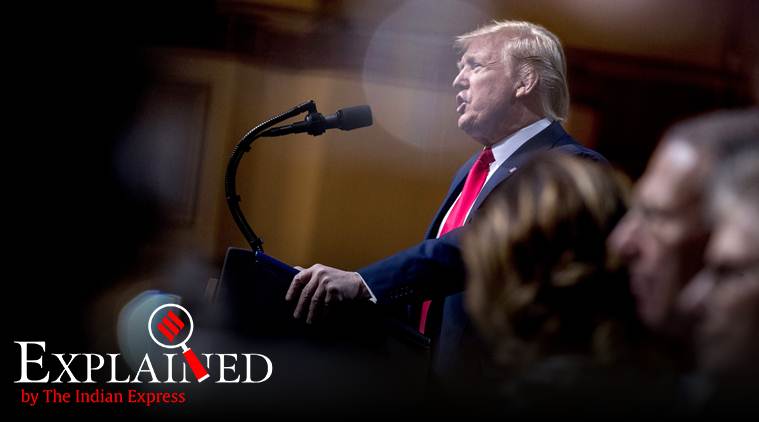A negative interest means the instead of the bank paying you money to keep in the savings account, you pay the bank to do so. It also means that anyone can borrow money from the bank and pay back less than what they borrowed.
During a speech to the Economic Club of New York on November 12, US President Donald Trump yet again railed against the US Federal Reserve — the country’s central bank — for having kept the interest rates in the US economy too thus undermining the competitiveness of the US firms. He said his administration had created 7 million jobs — more than three times more than what anyone thought possible before he was elected in November 2016. Trump said that his administration had reduced poverty and launched an economic boom “the likes of which we have never seen before”.
But he said he did this “in spite of a near-record number of rate increases and quantitative tightening by the Federal Reserve since he won the election. Eight increases in total which were in my opinion far too fast an increase… because remember we are actively competing with nations that openly cut interest rates so that many are now actually getting paid when they pay off their loan, known as negative interest. Whoever heard of such a thing? Give me some of that. Give me some of that money. I want some of that money. Our Federal Reserve doesn’t let us do it”.
He further said “I don’t say that’s good for the world (but) I am not President of the world. I am the President of our country. But we are competing against other countries nonetheless and the Federal Reserve doesn’t let us play at that game. It puts us at a competitive disadvantage to other countries”.
Explained: What are negative interest rates?
A negative interest means the instead of the bank paying you money to keep in the savings account, you pay the bank to do so. It also means that anyone can borrow money from the bank and pay back less than what he borrowed.
Why are interest rates cut below zero?
When a central bank does it — Sweden did it first in 2009 but now European Central Bank rates are also negative as are Japanese rates — the idea is simple, albeit borne out of desperation: Negative interest rates are expected to make consumers save less and spend more; they are also expected to make banks lend more. In essence, negative interest rates are expected to boost economic activity when all other efforts fail.
Why is Trump asking for negative interest rates?
If European firms can borrow at negative interest rates they have an advantage over any other competing firm that has to borrow at positive interest rates. This difference could be crucial in securing a global competitive advantage, and that is why Trump is asking for negative interest rates.
What are the downsides?
There are many negatives to negative interest rates. For one, negative interest rates completely alter the way normal investment and savings behaviour function because now a saver is paying for parting with cash and a borrower is being perversely incentivised to borrow more.
A big borrower in all countries is the government itself, which can now borrow money without as much worry as earlier. But if this behaviour carries on, governments are likely to borrow more than they can ever repay especially if the interest rates go up. A government that can’t pay its debt would be calamitous for all the other sections of the economy as well because it would ruin the credibility.
The other big downside is that the financial viability of banks comes under strain if the loans they extend lose money by design. This forces banks to also raise charges on other services, making them more costly than they need to be — in turn, hurting consumer demand.
But why would anyone lend money to a government if the return is negative?
It is true that, on the face of it, it makes no sense. However, people do buy government bonds with negative yields — as it has happened in Germany. When this happens, it essentially means that people expect this to be the best and safest investment. In other words, this behaviour reflects how poorly investors see the economy performing. So instead of being a delightful prospect, negative interest rates are essentially reflective of extremely weak economic growth prospects — a point that the US President perhaps fails to understand.
Have they worked?
Not really. Data shows that European economies and Japan continue to struggle with growth. For the most part, people have not spent the cash, and because they haven’t, businesses haven’t taken new loans to set up more production capacities.
What will happen if the US has negative interest rates?
For the time being, most European banks have been shifting their funds to dollar bonds, which still pay positive interest rates. But if the US also shifts to negative interest rates, there will be no place to hide, no cushion and things get into very dangerous territory that could threaten the stability of the global financial system. That is why perhaps President Trump said that negative interest rates by the Fed may not be good for the rest of the world.
Don’t miss from Explained: Why Australia is looking at a climate change angle to its bush fires
Source: Read Full Article


